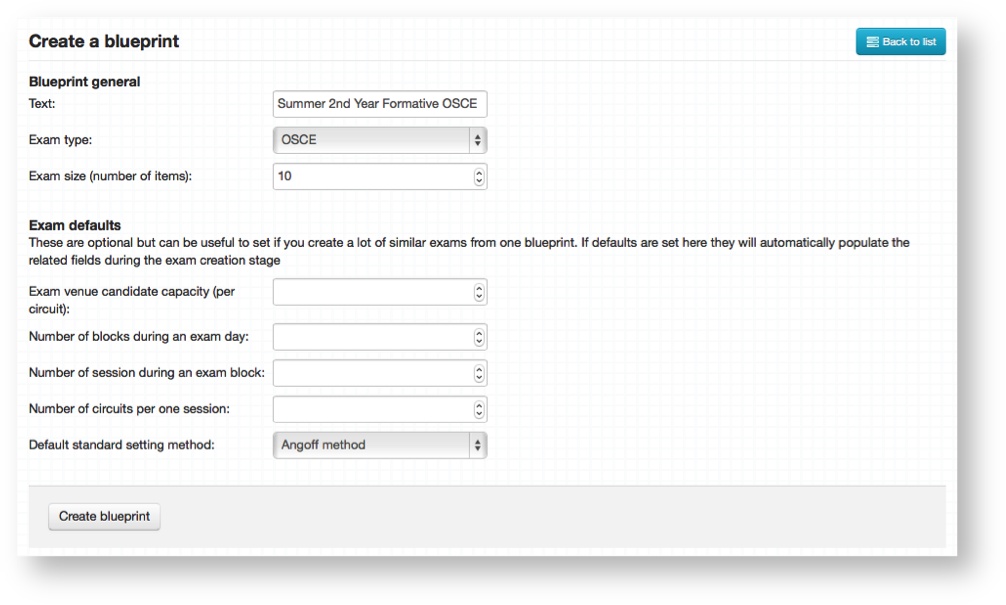Exam Blueprints
This covers how to relate your blueprints directly to the creation of exams, i.e. sets of questions.
Step-by-step guide
- Clicking on Create a new blueprint from the dashboard will take you to the creation screen.
- The idea for creating exam blueprints is to allow you to create templates for common exams that might reoccur in the same format regularly. For example an OSCE exam that is always run in the summer with the same number of stations and to the same year group. All of the information that you enter here will influence the questions/stations that the system tries to automatically generate for this exam. Setting the Exam defaults will also determine the configuration and placement of candidates into circuits and sessions.
Exam defaults terminology
- Exam venue candidate capacity
This is the maximum number of candidates that your exam venue can accommodate per circuit - Number of blocks during an exam day
Useful to have more than one if you intend to run different Item sets on the same day. One block can accommodate one Item set. - Number of sessions during an exam block
Sessions are run sequentially and usually multiple sessions will allow different groups of candidates to take the same exam on the same day. - Number of circuits per one session
Circuits are run concurrently so this field determines the number of circuits that your exam centre can accommodate at the same time. The number of candidates each circuit will contain is set within the field for Exam venue candidate capacity. - Default standard setting method
Choose between Angoff, Ebel, Borderline Group and Borderline Regression. Read more about this here
- Exam venue candidate capacity
Related articles

